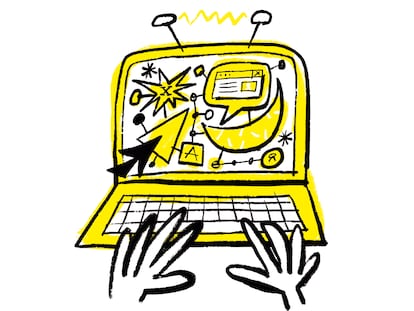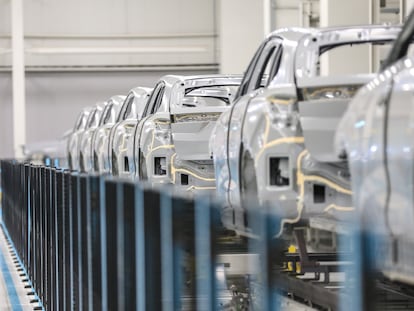What’s coming next from Amazon? A robotic pet, hands-free TVs and robotaxis
The company is testing new products and services in the United States, which it plans to make available to the rest of the world as early as next year
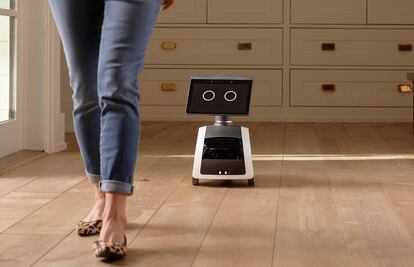
Amazon is certain that, for the moment, it does not want to be a cell phone manufacturer, following the failure of the Fire Phone, and it knows that it must fight for leadership in e-commerce amid fierce Chinese competition from AliExpress and the emerging Temu. The company also knows that its immediate strategy is to conquer households with devices and services that automate it to the maximum. But at its Seattle headquarters — to which 20 international media outlets, including EL PAIS, were invited — Amazon is already working on and testing new devices and services that they plan to extend to the rest of the world, such as a robotic pet (Astro), voice-controlled 4K UHD televisions (Omni), an online gaming platform (Luna) and its most ambitious project: becoming an internet provider in places where fiber cannot reach by building its own satellite network (Kuiper) to compete with Starlink, Elon Musk’s service.
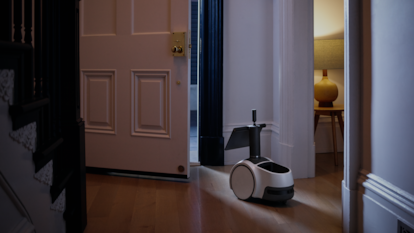
Astro
“Within 5 to 10 years, every home will have at least one robot.” That is the premise of Dave Limp, Amazon’s vice president for devices and services, for developing this mobile device, which was launched two years ago by invitation and which users are still testing. Astro has been billed as Alexa (the company’s voice assistant) on wheels. But Limp believes it is more than that: “[Astro is] closer to a pet. It provides companionship and a personality has been added to it.” Astro is named after the dog from The Jetsons, Hanna-Barbera’s futuristic animated family; the robot will have its own voice, and its display shows reactions that simulate emotions through two eyes that resemble emojis.
Ken Washington, the vice president of consumer robotics, explains that Astro has two hours of battery life and can move around without crashing into anything in complex, unlit environments; interact with household members; monitor pets; check the home’s security status; keep track of how the elderly and children are doing, and provide entertainment.
Washington claims that all processes are performed and stored on the device, that no data is shared in the cloud and that it guarantees privacy. At the end of the testing phase, Astro’s price is expected to be around $1,500.
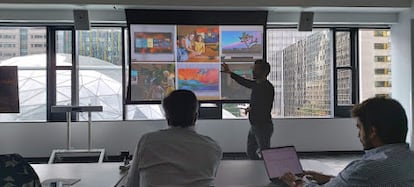
Televisions
Amazon has already invested in Fire TV and Cube devices to upgrade and convert older electronics into low-priced TVs that connect to the internet and respond to voice commands. But the company’s goal is to offer its own device, in addition to integrating its system into other brands’ products. The new TVs are the latest generation of the Omni series, 4K Ultra HD TVs that are already marketed as 65-inch screens in the United States for $600. These devices are part of Amazon’s broader connected home strategy; they respond not only to TV-related voice commands but to all connected devices. In addition, the TV works as a picture frame, an additional Alexa, an on-demand image creator and a gaming monitor.
“We’ve gotten used to the idea that there’s a part of our house [the TV] that we set aside; it doesn’t do anything for us and it’s ugly. We believe we can reestablish what it means, help users and make it the center of the home,” says Daniel Rausch, Amazon’s vice president for entertainment and services.

Luna
Luna is an online gaming platform that will be available to Amazon customers starting next March in the United States; it will then be expanded to Canada, the United Kingdom and Germany. A date for Luna’s availability in the rest of the world has not yet been set. With Luna, people can play games on any existing device, will be able to use their cell phone as a controller (controllers will also be sold for specific devices) and will include Fortnite.
Rausch justifies this year of testing by noting that “processing a video game in the cloud and then bringing it into a customer’s home, even to their living room, entails solving many complex technical problems.” The executive adds that “the first task is to make sure it actually works. Then, [the next one is] to reach as many customers as we can, but there are different standards, technologies, regulations, supply chains... These are not impediments, but they are things that take time in product development and in business.”

Kuiper
This is the retail giant’s most ambitious project. Naveen Kachroo, the project director, says that Kuiper would serve “to bring reliable, fast and cheap internet” to the 2.9 billion people who, according to the UN’s International Telecommunication Union (ITU), don’t have access to the internet or have never used it.
This huge community of people without internet — which accounts for 37% of the world’s population — can be reached via space, as with Elon Musk’s Starlink, which is already up and running. To this end, Kachroo says, satellite production is beginning this year, and 77 launches have already been contracted. The goal is to deploy 90% of the constellation (a total of 3,226 satellites) by 2029.
The receivers will be 18 square centimeters (100 megabytes per second), 28 (400 Mbps) and 81 by 46-centimeter antennas for one gigabyte per second traffic requirements.
In addition to residences without fiber optic services, Kuiper’s market includes small and medium industry, remote area utilities, transportation, telecommunications companies and emergency devices.

Zoox
Amazon employees are already testing these autonomous cabs in California. Zoox cabs, which are still under development, can be seen in the streets of Seattle. “In the next two decades, most of the world’s population will be over 65 years old,” Limp says, explaining that this will be one of the target demographics for this type of service. The executive admits that it is a risky sector, but they are confident in technological development. “With the advances that have been made in artificial intelligence, we believe it is a manageable problem,” he says.
Sign up for our weekly newsletter to get more English-language news coverage from EL PAÍS USA Edition
Tu suscripción se está usando en otro dispositivo
¿Quieres añadir otro usuario a tu suscripción?
Si continúas leyendo en este dispositivo, no se podrá leer en el otro.
FlechaTu suscripción se está usando en otro dispositivo y solo puedes acceder a EL PAÍS desde un dispositivo a la vez.
Si quieres compartir tu cuenta, cambia tu suscripción a la modalidad Premium, así podrás añadir otro usuario. Cada uno accederá con su propia cuenta de email, lo que os permitirá personalizar vuestra experiencia en EL PAÍS.
¿Tienes una suscripción de empresa? Accede aquí para contratar más cuentas.
En el caso de no saber quién está usando tu cuenta, te recomendamos cambiar tu contraseña aquí.
Si decides continuar compartiendo tu cuenta, este mensaje se mostrará en tu dispositivo y en el de la otra persona que está usando tu cuenta de forma indefinida, afectando a tu experiencia de lectura. Puedes consultar aquí los términos y condiciones de la suscripción digital.

